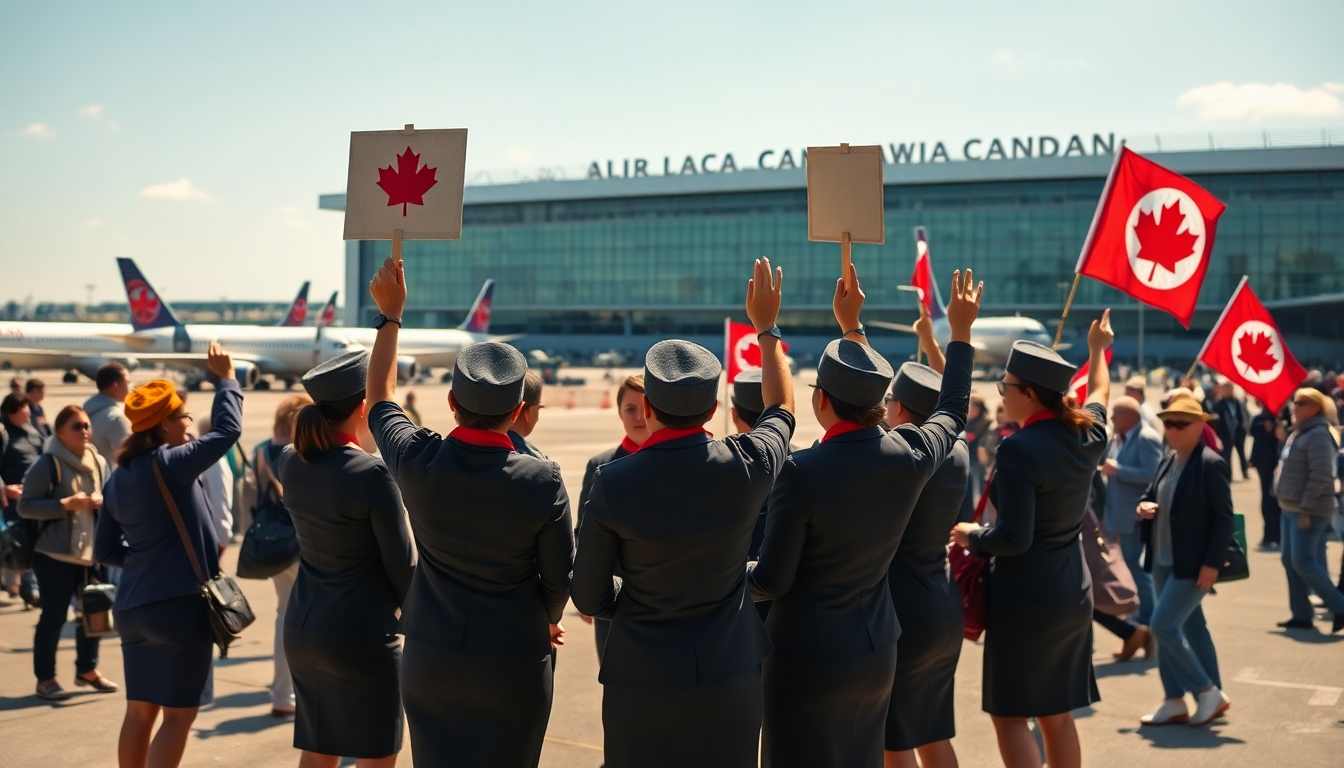Table of Contents
In a surprising twist, Air Canada flight attendants have launched their first strike in 40 years, boldly standing up against a government-backed return-to-work order. This unprecedented move has not only caught the attention of the media but has also raised serious questions about labor rights and the operational stability of Canada’s largest airline, especially during the busy summer travel season.
With around 130,000 passengers affected daily, it’s clear that the stakes are high when it comes to labor relations in the aviation industry.
Background of the Strike
The Canadian Union of Public Employees (CUPE), which represents the flight attendants, has made it crystal clear: they won’t back down, even in the face of an ultimatum from the Canada Industrial Relations Board (CIRB).
The union argues that the return-to-work order is unconstitutional, claiming it undermines their right to negotiate fair contracts. Their main demands focus on compensation for ground time and boarding assistance—vital parts of their job that they believe deserve better pay.
As tensions rise, the Canadian government has stepped in, attempting to ease the situation by seeking binding arbitration from the CIRB. This intervention aims to protect the economy and maintain some semblance of stability in the airline industry. However, the union’s refusal to comply with the order is noteworthy; it’s not often that unions openly defy such directives, making this situation all the more intriguing.
Key Issues at Stake
At the core of this dispute is a much larger conversation about labor rights and fair compensation, especially in light of rising living costs. Workers are voicing their frustrations over Air Canada’s proposed wage increases, feeling that the offers fall short of what’s needed in today’s economic climate.
The flight attendants contend that their pay hasn’t kept up with inflation, and this only adds to their challenges.
Natasha Stea, a flight attendant and local union president, has highlighted the growing solidarity among various unions, underscoring a collective concern that workers’ rights are being undermined.
Could this solidarity signal the start of a larger movement within labor sectors grappling with similar issues around compensation and working conditions?
Implications for Air Canada and Travelers
As Air Canada gears up to resume operations amid this strike, the airline faces a dual challenge: regaining traveler confidence while juggling complex labor negotiations. The ongoing strike affects immediate travel plans for thousands of people and could set a crucial precedent for how labor disputes are managed in the future. With summer being peak travel season, both the airline’s reputation and its financial health hang in the balance.
The prospect of extended negotiations could lead to ongoing disruptions for passengers and prompt a reevaluation of labor practices within the airline industry. All eyes will be on Air Canada to see how they navigate this crisis and the outcomes of the negotiations that are sure to follow. What will it mean for travelers and the future of labor relations in this sector? Only time will tell.





